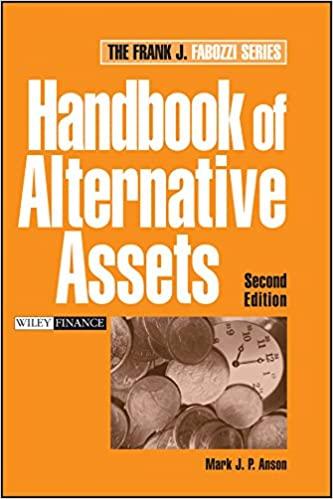Answered step by step
Verified Expert Solution
Question
1 Approved Answer
Midsouth Exploration Company Lou Matson, President of Midsouth Exploration Company, knew that circumstances had finally become favorable for drilling for oil in March of 2
Midsouth Exploration Company
Lou Matson, President of Midsouth Exploration Company, knew that circumstances had finally become favorable for drilling for oil in March of For the last three years conditions had been miserable for oil companies. As the price of oil slipped to $ a barrel, it was no longer economically feasible to search for new sources of petroleum. However, the booming world economy in the first quarter of along with restricted output by OPEC and other oilproducing nations, had sent the price of oil to over $ a barrel.
Midsouth Exploration had extensive holdings in Louisiana and East Texas that had largely gone unattended over the last three years. When Lou Matson called his chief geologist, Harold Boudreaux, the drilling expert quickly informed Matson that all systems were go from an exploration viewpoint.
Raising Capital
However, Midsouth had a problem and that was raising capital to carry out the new exploration. While the firm often formed limited partnerships for specific projects, permanent capital was also required to support the increased operations of the firm. A recent conversation with Arthur Barnes III, the managing director of the investmentbanking firm of Barnes, Colson, and Wilson, Inc., lead Mr Matson to believe that immediate and decisive financing activity was necessary.
Thirty million dollars in new capital needed to be raised as a base for future operations. Because of the risky nature of the firms business, debt financing was out of the question. The investment banker suggested a new common stock issue might be the best alternative, but he also pointed out there was a potential problem.
In the company had issued $dividend cumulative preferred stock at $ par value. There were shares issued. The company promptly made payments on the preferred stock from to However, in the second half of and in and no preferred stock dividends were paid. Mr Barnes, the investment banker, pointed out that common stock would be difficult to sell with the preferred stock dividend in arrears unpaid With cumulative preferred stock,
no dividends can be paid to common stockholders unless all prior dividend claims by preferred stockholders have been satisfied. Of course, current claims must also be met.
Financing Plan
Mr Barnes investment banking experience led him to believe that any new common stock that Midsouth Exploration Company issued must pay dividends.
He suggested that if Midsouth sold common stock at $ per share to the public less $ in flotation costs to the corporation a $ per share common stock dividend would likely be necessary to attract investors.
Mr Barnes further suggested that instead of attempting to pay all of the preferred stock dividends in arrears, the company offer the old preferred stockholders new preferred stock that is worth percent more than the outstanding preferred stock which is currently selling for the amount it is totally in arrears The new preferred stock would pay a percent dividend yield.
Because the old preferred stockholders would become new preferred stockholders, they would once again become dividend recipients, and would have a tax obligation related to the annual dividend yield of percent.
Cost of Funding
As president of Midsouth Exploration Company, Mr Matson liked the idea of exchanging new preferred stock for old preferred stock as well as selling new common stock. He was definitely willing to go along with the plan. However, there was one question that bothered him. Being a petroleum engineer, he had no formal business training and that, perhaps, was the reason behind his concern. He wondered why the firm had to pay a percent dividend yield on preferred and only a percent dividend yield on common stock $ dividend$ stock price His investment banker explained that the cost of common stock was not simply the cost of the dividend, but the total expected return to stockholders that must be earned to keep them satisfied. He suggested that investors in Midsouth Exploration Company had an expectation that the company would be able to grow at a percent rate g in the future.
Required Has the company broken any laws or agreements by failing to make dividend payments on the preferred stock?
How far is the company in arrears behind in its preferred stock dividends on a per share basis? How much is it totally in arrears on all shares?
What would be the price per share of the new preferred stock?
How much would the new preferred stocks dividend per share be with a percent yield?
Under the proposed financing plan to raise $ million in new funds, how many new shares of common stock must be issued?
The outofpocket costs will be $ while the underwriting spread flotation cost is $
Step by Step Solution
There are 3 Steps involved in it
Step: 1

Get Instant Access to Expert-Tailored Solutions
See step-by-step solutions with expert insights and AI powered tools for academic success
Step: 2

Step: 3

Ace Your Homework with AI
Get the answers you need in no time with our AI-driven, step-by-step assistance
Get Started


